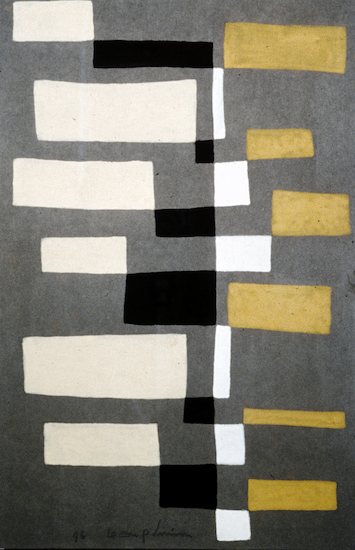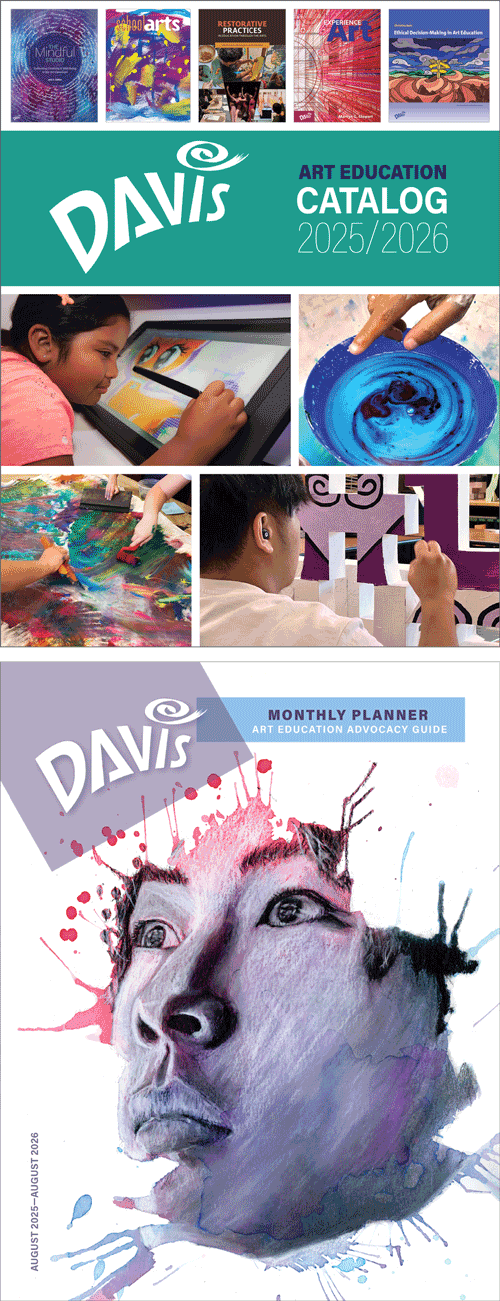Artist Birthday: Leon Polk Smith
Leon Polk Smith was an American artist of Cherokee descent who was a pioneer of modernism long before Abstract Expressionism evolved in New York. His works throughout his career emphasized a pure geometric abstraction.
Artist Birthday for 20 May: Leon Polk Smith (1906–1996, United States)
Leon Polk Smith is considered one of the founders of Hard Edge abstraction, also sometimes called Concrete Art or Neo-Plasticism.
 |
| Leon Polk Smith, Untitled, 1946. Gouache on cardboard, 61 x 40.6 cm. Private Collection. © 2025 Leon Polk Smith Foundation / Licensed by VAGA at Artists Rights Society (ARS), New York. (8S-18373) |
Geometric patterning can be seen throughout Smith’s body of work. This included grid-like patterns and diagonal passages comparable to Mondrian’s work. Smith’s works, however, dispensed many of the strictures of Mondrian’s Neo-Plasticism, such as the thick black outlines and restriction to only primary colors (red, blue, and yellow). Smith’s works reveal repeated patterns in bold color. His devotion to pattern can be partially attributed to exposure to Native American art forms such as beadwork, ribbon work, and ceramic decoration in simple, flat patterns. Ribbon work in particular uses highly intricate combinations of layered strips, folded or cut to reveal colorful patterns.
The American home-grown modernist art movement (albeit influenced in some part by European Surrealism) called Abstract Expressionism came to dominate progressive art in the 1950s. By the late 1950s and early 1960s, there were artists in several movements that challenged the doctrinaire nature of Abstract Expressionism’s form of intuitive modernism. Pop Art, Assemblage, Photorealism, Op Art, and Post Painterly Abstraction were some of these counterpoint movements.
Artists working in various types of geometric abstraction, which included Minimalism, evolved a form of painting which was first dubbed Hard Edge painting in 1959 by a California critic. It is a form of geometric abstraction that transcended the reduction of earlier strains. Hard Edge can by described as a search for total pictorial unity, an immaculate surface (i.e., free of brush marks or any trace of the artist), few if any forms, usually restricted color, no foreground or background, and no “figures in a field”. This group included Ellsworth Kelly (1923–2015), Alexander Liberman (1912–1999), Ad Reinhardt (1913–1967), Agnes Martin (1912–2004) and Leon Polk Smith.
Smith was born on a farm in Indian Territory of Oklahoma a year before it became a state (1907). His parents were both of Cherokee ancestry, and his family had an interconnection with the Choctaw and Chickasaw Native peoples who had been forcibly removed to Oklahoma in the 1800s. From a young age, Smith knew that farming was not his calling. Determined to be a teacher, he received a BA in education at Oklahoma State College (1936), and moved to New York where he received a masters from the Teachers’ College at Columbia University in 1938.
It was in the late 1930s that Smith began to explore his painting practice. He was greatly drawn to European modernism after seeing works by various European abstract artists in the Gallatin Collection at New York University in 1936. The Neo-Plasticism of Piet Mondrian (1872–1944) had the greatest impact on Smith’s development of a geometric, abstract style. His style of the late 1930s exhibited elements of Cubism, Surrealism and Expressionism, but it was in the early 1940s when he began to explore works in a geometric abstract approach.
Smith recognized a universal visual language shared by European modernism and the arts of Native Americans. His geometric language was also informed by his sense of geometry gleaned from the plains of the Oklahoma landscape. This combination of biographical elements with his careful study of European modernism created a unique and radically Minimalist body of work. Smith is considered one of the “founders” of Hard Edge painting.

Comments